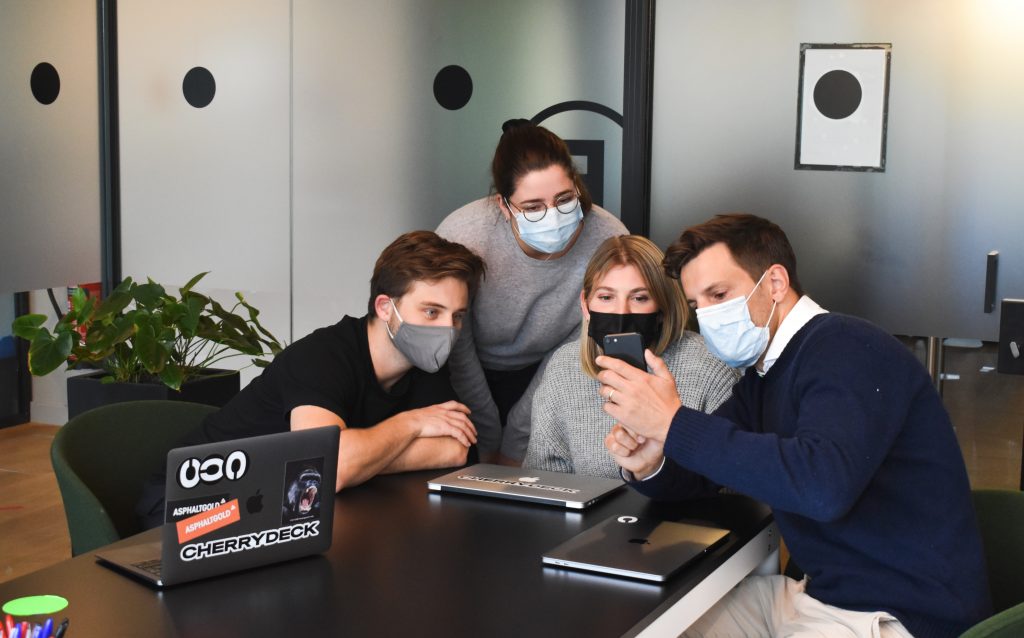Many decisions involve some degree of risk. Often taking a risk is advantageous. Many innovations were made possible because someone took a risk.
However, more often than not, people take risks that are harmful. While not wearing a mask increases the risk of getting COVID-19, many people still do not wear one. Despite knowing the risks of engaging in unsafe sex, people continue to do so.
Why do people take risks despite being told about the dangers? How can such risk-taking behaviors be discouraged?
The Translational Research Center (TRC) invited together several experts to shed light on that question. Scott Burris, professor of law and director of the Center of Public Health Law Research at Temple University, Victor Hugo, senior economist at the World Bank, and Jacqueline Volkman-Wise assistant professor in the Fox Department of Risk, Insurance and Healthcare Management, share their perspectives.
An understanding of prior beliefs
Much research discusses the framing of preventive messages, suggesting that messages one can relate to are more fluently processed and, therefore, are more persuasive. Burris argues that people are more likely to follow a message when it fits their prior beliefs.
Burris proposes that the moral foundations theory, outlined by Jonathan Haidt, provides a good understanding. The theory suggests that people with different political ideologies are likely to have different moral concerns. For example, while liberals care more about protecting others, conservatives are likely to care more about loyalty with the in-group. As such, conservatives are more likely to respond to a message encouraging them to wear a mask if a message talks about loyalty. In contrast, liberals are more likely to respond favorably to a message which talks about protecting others. Therefore, understanding people’s moral beliefs can help craft more persuasive messaging.
The value of “edutainment”
When educating people about risks, one cannot ignore the value of entertainment. Hugo’s work with the World Bank elucidates this point. Hugo and his collaborators used “MTV Shuga,” a popular TV series much like “Friends,” to educate young adults in South Africa about HIV. Using a randomized controlled trial, some viewers were exposed to the series with built-in HIV messaging, while others in a control group viewed a version without it. After eight months of watching the series, HIV testing doubled, having more than one sexual partner was halved and STDs went down in those who viewed the messaging, compared with the control group.
Hugo explains that the two key drivers of these results are role modeling and social norms. People often look up to characters they can relate to. Role modeling enhances self-efficacy, as people believe that if a character who they can identify with can engage in certain behaviors, they can too. Additionally, people believe if a certain action is trendy or popular, they should also engage in it—eventually creating a social norm. Hugo further points out that when watching a popular series, people are immersed. As such, they are more likely to believe the message and less likely to counterargue, which they tend to do when the information is simply being relayed to them.
Emotions underlying decisions
Research suggests that emotions are a key driver for risky decision-making. Wise shares that it’s important to understand when emotions are beneficial versus harmful. For example, her research shows that people are more likely to engage in risky decisions when they experience envy toward their peers. Risky financial decision-making could be helpful when thinking of long-term investments; however, it could be harmful when closer to retirement.
Wise argues that the impact of envy on risky decision-making could be mitigated using experience-based decision-making. If people are provided with experience in that domain, it might mitigate the effects of peer-driven envy.
The influence of peers
The value of a peer education system is one of the most highly researched topics. Consistent with past research, Hugo’s work with the World Bank shows that a peer education program for HIV testing is more effective than training the full community.
More interestingly, he outlines that the choice of peer educator is an important one. In a preliminary study conducted in Brazil, Hugo finds that peer educators who were most widely connected were more successful in impacting behavioral outcomes. Such outcomes include increasing college-related aspirations and lowering teenage pregnancies, compared with a peer educator who is perceived as the coolest or one chosen by the school.
Mandates may help
Should socially beneficial behaviors be mandated? Burris argues that mandates help make a particular behavior a social norm. For example, when seat belts were mandated, the behavior slowly became standard. Consistently, recent research in Germany shows that mandating masks not only led to broader compliance than a voluntary policy, but it also increased the practice of other safe behaviors. However, it’s important to carefully choose the source communicating the mandate. Burris argues that for rapid compliance, the spokesperson should be someone who is trusted by the community.
People often take damaging risks. Policymakers, therefore, are keen on understanding how such risky behaviors could be prevented. Successful policies are grounded in an understanding of the different drivers or risky decision-making. This is where collaboration between researchers and policymakers is the key.
Learn more about how the Translational Research Center (TRC) at the Fox School is working to solve real-world problems with research at fox.temple.edu/trc.
